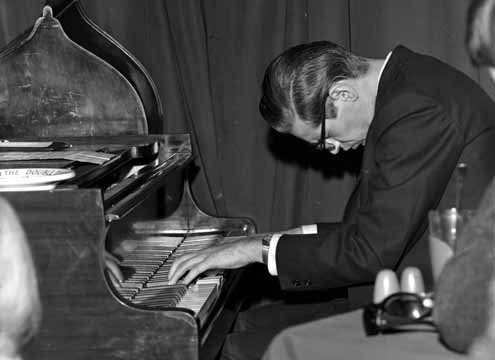1. Sign on the Dotted line -- Make sure your child understands that taking music lessons is a privilege and in order to earn that privilege, practicing is part of the deal. At the start of lessons (or a new term, or a birthday, or a new year, (hey what good timing for a blog post!) make an agreement with your child. Something like, "I agree to practice for ___ minutes, ___ times per week." Put it in writing and have the student, the teacher, and a parent sign it. Have fun making this agreement with your child. Craft it out of colorful paper and have the child draw a picture to make it special. Or, for the less artistically inclined, click here to download a practice agreement that I’ve created for my teaching studio.
Practice isn’t always going to be something that your child wants to do. Think of all the other distractions: Toys, siblings, pets, iPads, computers. Would we exercise every day if it wasn’t part of our routine? So how can we expect our children to practice if it’s not part of their everyday routine? A contract is a good way to get a consistent practice routine started and part of everyday life.
2. How long? How often? Part of your agreement should be how long and how often your child should be practicing. Let me first say that this is different for everyone, but the most important thing is that you, your child, and your teacher decide on something that is a reasonable goal. Remember, we want to set the student up for success!
As a starting point, a great formula to determine practice length is:
Student’s age X # of years of lessons = number of minutes to practice
That means that if your 6-year-old is starting lessons, she practices for 6 minutes a day. Once she has been taking lessons for over a year, she practices for 12 minutes a day. Again, this is just a starting point. It may seem like a small amount (and it is…) but you’d be surprised - some students will go beyond their time, and as an added bonus, they won’t feel as though you are asking too much of them. In any case, it’s up to you, your child, and your teacher to determine what’s best. For many starting piano students (around 6-7 years old) I think 10 minutes per day is a great starting point. Maybe in the second year of lessons, increase the practice time to 15 or 20 minutes. It would be good to get into the habit of updating your contract every year so your child understands what is expected!
How many times per week a child practices can also vary. I think 5 or 6 times per week is a good goal. Perhaps you have a steady routine that you stick to on school days, and then on Saturday mornings the child starts the day by practicing.
And a quick note on this subject, contrary to what many young students would like to believe, having a piano lesson does not count as practice time! In fact, some of the most effective practice time happens on the day of the piano lesson, right after the teacher leaves – it will help the child to retain what he/she just learned.
3. Make a Chart -- Okay, so how can we keep track of all this practicing? You guessed it, it’s time for a sticker chart. An 8.5X11 piece of printer paper or colorful card stock will work nicely. Fill out rows for each week and make a column for each practice day. Hang it up next to the piano or keyboard or in a prominent place in the house. A chart is useful because it keeps your child accountable for practice. It lets him see the days he practiced, and also those that he missed. If you are doing things right, those missed days will stick out like sore thumbs and that’s good. Give your child an opportunity to make up for missed days by practicing double (although don’t make this a habit!). As the chart fills up with colorful stickers, it will be something your child can look at and be proud of. Click here to download a printable practice chart.
4. The best time? In order to develop good practice habits, you need to work to make practice time a regular part of your daughter or son’s routine. Don’t leave music practice as an afterthought -- have it be built right into the rhythm of the day. That way, it’s part of the routine and not up for discussion. Everyone’s family operates at its own rhythm and you might have to do some experimenting to find out what works best. Some times to consider are: in the morning, right after school, before dinner, after dinner, or right before bedtime. I’ve worked with families who have struggled with practice in the evening, and then had great success by carving out 10 minutes in the morning for piano practice. Remember -- keep it consistent!
5. Rewards -- Let’s face it, sometimes charts just aren’t enough. If your child can’t be distracted by colorful stickers, try an incentives program in addition to the chart. For example, for each practice session, the child earns a dime, and that money can be saved up to buy a toy or for the financially savvy 7-year-old, to put in a savings account. You could try having your child save for a specific toy. This is useful because it can be adjusted based on the family’s budget and the child’s interests. Another interesting incentives program I recently discovered is that for every 1 minute of music practice the child earns 1 minute of “screen time” (video games/computer/iPad etc). Personally, I think the incentives should be a bit of a last resort as sometimes they can be great over the short term but can wear off in the long run. On the upside, if a student starts to practice because of an incentives program, she may get sold on the piano when she starts to be motivated because it’s actually fun to play music (who knew!), rather the external rewards.
6. Know the Assignment -- Now we are onto phase two of our mission. We’ve gotten your child to sit down for 10 minutes a day at the piano, 6 days a week. Now what? Just because the child is “practicing” doesn’t mean he is practicing if you catch my drift. The number one thing you can do as a parent to help your child make practice time effective is to get involved – be there, right next to your child as he practices.
With all of the students in my studio I make sure to write down the entire assignment in an assignment book or their lesson books. Make sure you know what your child’s practice assignment is every week! Depending on your child’s age, your teacher might have him practice things such as warm-ups/scales, songs out of a lesson book, songs out of other books, and fill out theory and composition exercises. If you are unsure of an assignment, be sure to ask the teacher – if you aren’t sure what your child should be practicing, there’s a good chance he doesn’t know either!
7. How to Practice -- Now that you know the assignment, here’s how to help your child during practice sessions. First, invest in a timer (or just figure out how the timer app works on your smart phone) and set the clock so she knows when practice time starts and stops. All of the practice time should be spent on the assignment. Remember, practicing is playing what you don’t know!
Once the clock begins, start reviewing each assignment one by one. Most children’s lesson books do a fantastic job of making the lessons clear and easy to understand. This way, as you follow along with your child, you should be able to learn as well! Make learning the piano something you do together. Better yet, if you don’t understand something, have the child try and explain to you what she learned in the lesson as you are looking at the lesson book– children love to be the “teachers”!
In general, your child should play a song several times before moving onto the next one. Encourage her to practice just the portions of the song she struggles with. Other useful things to have her do are 1) name all of the note letters in the piece 2) clap the rhythms and 3) explain what all the musical symbols mean (fortes, pianos, repeats, etc). If you run through all of the songs and still have time left – do them again!
If you are ever confused about an assignment, ask the teacher about it during a lesson. I love when parents ask good questions about how they can help their son or daughter practice – it means they are taking piano lessons seriously and shows their child by example that they are interested in lessons and value the teacher’s opinion.
8. Keep it Relevant -- Another great way to keep things interesting is by having your son or daughter learn songs that he/she knows outside of the context of piano. Folk songs and lullabies often work great. Pop songs can be a little harder to convey on beginner piano, but it can be done! If you know songs that your child enjoys, be sure to mention to them to your teacher. I recently had a student learn to play the melody of a lullaby his mother sings to him. It was so cool – he learned to play the melody on the piano and even sang as he played! I had another student who is a huge baseball fan learn “Take Me Out to the Ballgame” – needless to say, practicing time really spiked up when we were learning that one!
9. Show Off! The last step to successful practice is to give your child the opportunity to show off his/her piano skills. One of the biggest motivators for young children to practice is recognition among their peers and family. I still remember when I was in 3rd grade and used to play “The Entertainer” for a group of admiring friends at school. Set your child up for similar experiences – it does wonders for self-confidence and gives them motivation to learn more music. Schools provide opportunities for students to play a song during assemblies or music class – be on the lookout for those and encourage your child to perform. Additionally, have your child play a favorite song in front of family or friends.
=======================================
I hope some of these tips help you to make practice time a consistent part of your families schedule. Remember, the key is routine and consistency. The students who have a steady practice routine gain so much from music lessons – not only in musical skills, but in the learning of valuable life skills such as commitment and self-motivation.
Do you have any methods that you have successfully used to help young students practice? Do you have any questions about how to get your child to practice more? Share them in the comments section or write me in the contact section of the website.
Happy Shedding (practicing)!




 RSS Feed
RSS Feed